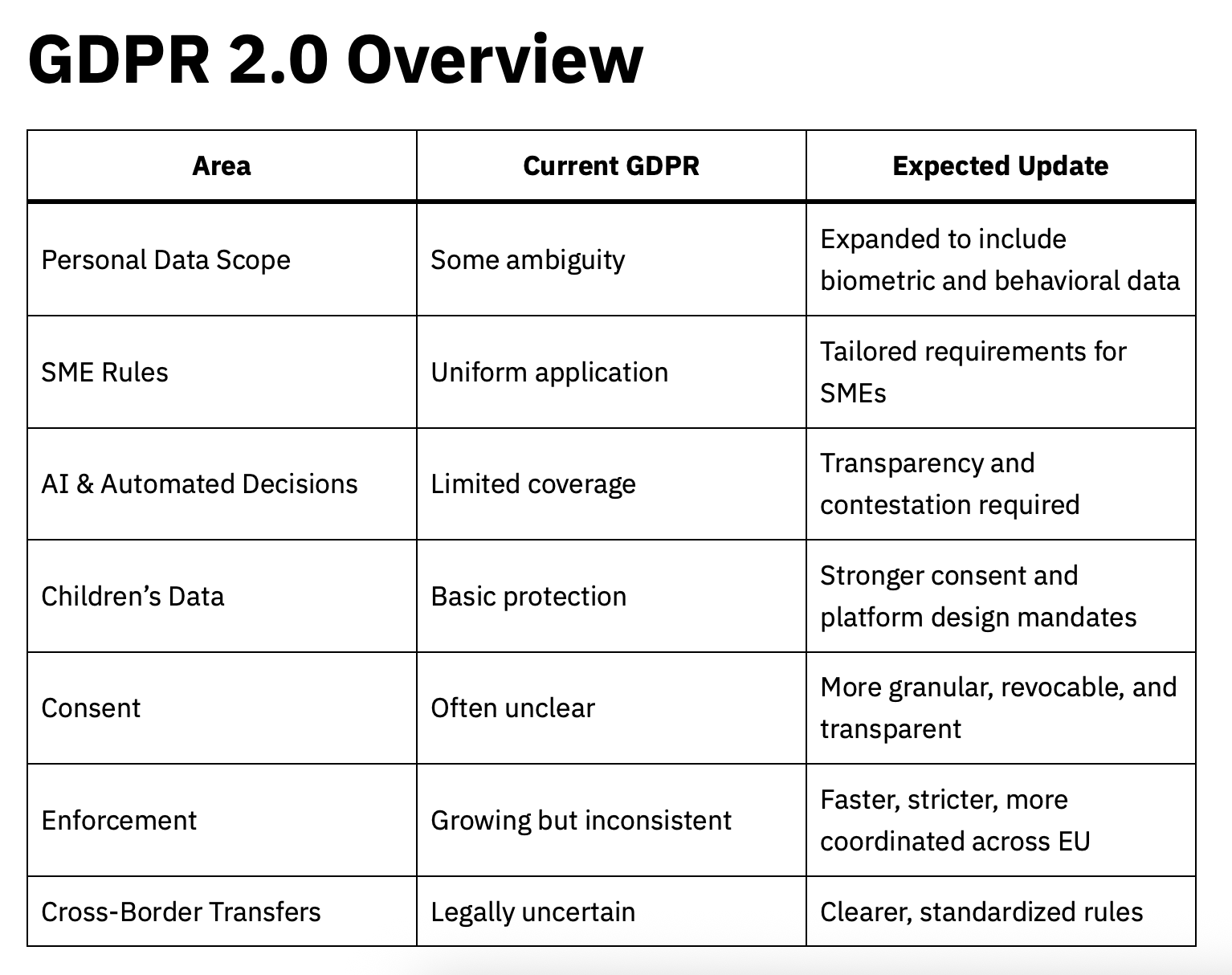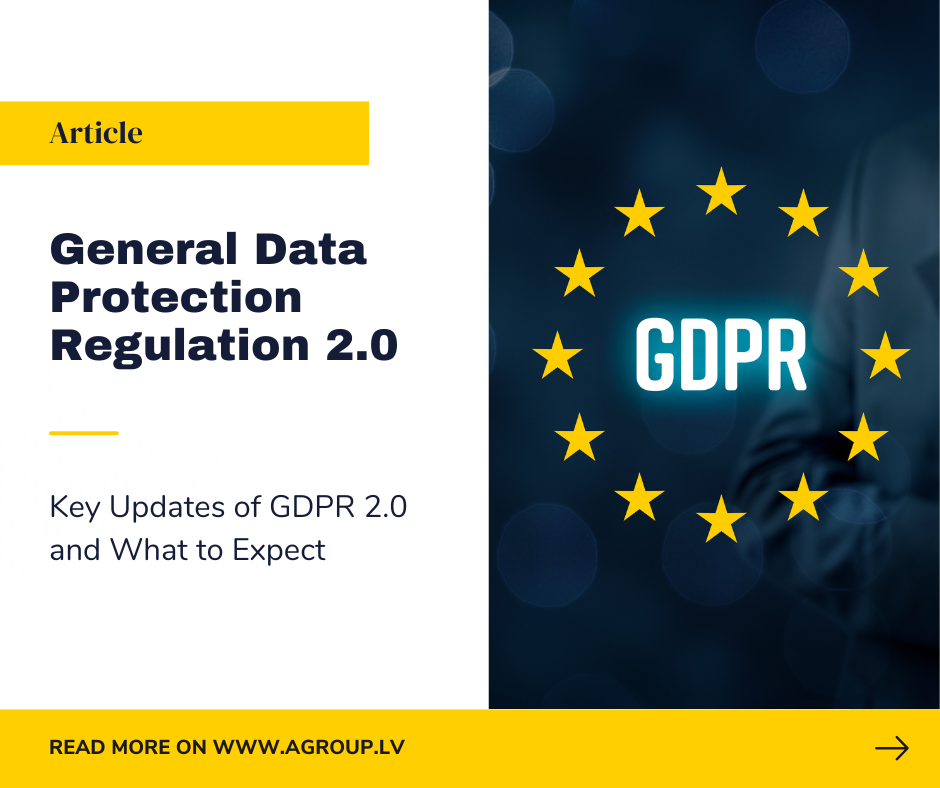GDPR 2.0 is an informal term used to describe upcoming reforms to the EU’s General Data Protection Regulation (GDPR), originally adopted in 2018. These changes aim to make the regulation more relevant, easier to implement, especially for small and medium-sized enterprises (SMEs), and better suited to modern digital technologies like AI and IoT.
Why GDPR 2.0?
Since its launch, GDPR has been a global benchmark for data protection. However, it has also drawn criticism for being overly complex, particularly for SMEs, and for lacking clear guidance in areas like AI and cross-border data flows. Rapid tech evolution has exposed these limitations, prompting the EU to initiate reforms.
Key Proposed Changes
Though GDPR 2.0 is still being developed, several major updates are expected:
- SME Simplification: Reduced record-keeping and documentation requirements for businesses with fewer than 500 employees.
- AI and Automated Decisions: Stricter rules for transparency and human oversight of automated decisions.
- Expanded Personal Data Definitions: Inclusion of biometric, behavioral, and location data as personal data.
- Children’s Data: Tighter rules for obtaining consent and age-appropriate platform design.
- Consent Rules: More specific, revocable, and granular consent mechanisms.
- Stronger Enforcement: Higher fines, faster action, and more consistent cross-border enforcement.
- Cross-Border Data Transfers: Clearer frameworks to address current legal uncertainty.
- Privacy by Design: Greater emphasis on built-in privacy protections and possibly new certifications.
Will GDPR 2.0 Become Law?
Yes. The European Commission has confirmed its intention to reform the GDPR, particularly to ease burdens on SMEs while maintaining core privacy protections. The changes are expected to be introduced as part of a broader legislative package in late 2025.
What Should Organisations Do Now?
To prepare, businesses should:
- Track regulatory updates and prepare for stricter rules around AI and data classification.
- Review and improve their current consent, data mapping, and documentation practices.
How will GDPR 2.0 address challenges posed by AI and automation
GDPR 2.0 introduces targeted updates to address risks posed by artificial intelligence and automated decision-making systems. It strengthens transparency by requiring organizations to explain how AI uses personal data and ensures users are informed when subject to automated decisions.
Consent must be explicit, purpose-specific, and easily withdrawn, especially for AI training. Individuals will have the right to challenge AI decisions, demand explanations, and request data erasure. GDPR 2.0 also enforces data minimization, requiring AI to collect only necessary information for specific purposes. Companies must maintain detailed processing records, conduct privacy impact assessments, and face stricter penalties for non-compliance.
The regulation aligns with the EU AI Act, applying a risk-based approach with higher standards for sensitive applications like healthcare and finance. Privacy by design becomes mandatory, with technical measures like anonymisation and strong encryption expected in AI systems and services. Together, these reforms aim to ensure AI is used responsibly, with greater accountability and respect for individual rights.

Conclusion
GDPR 2.0 will impose stricter transparency, consent, and accountability standards on AI and automated systems, ensuring individuals retain control over their data and can challenge or understand AI-driven decisions.
It’ll represent an evolution, not a replacement. It aims to address real-world challenges, support innovation, and improve compliance. While the final text is still in progress, organisations should begin aligning their processes with the expected changes now.
Source:
